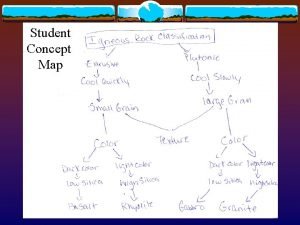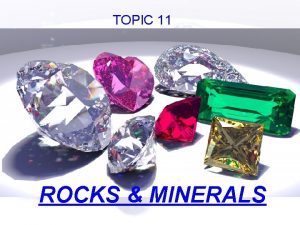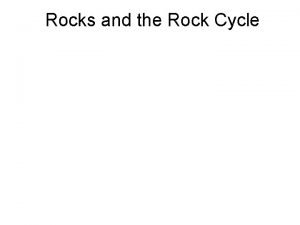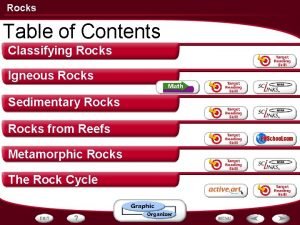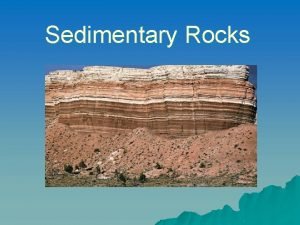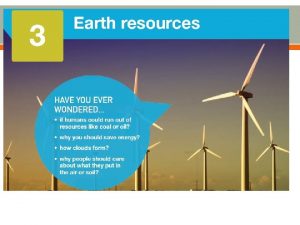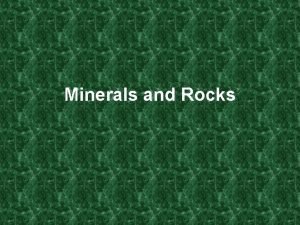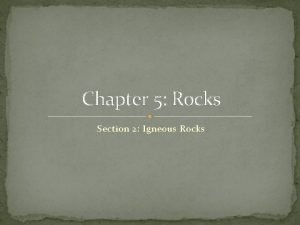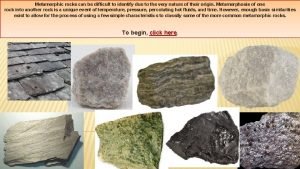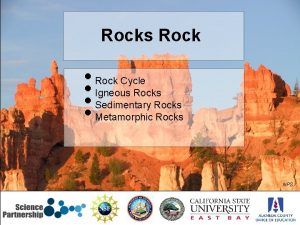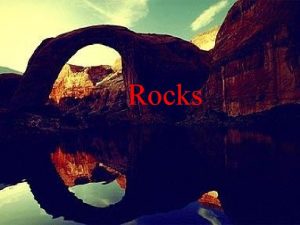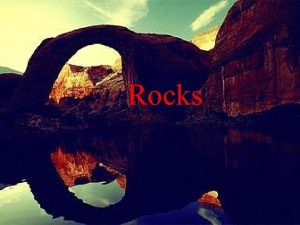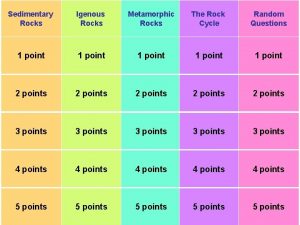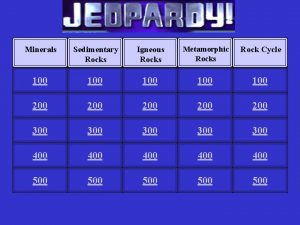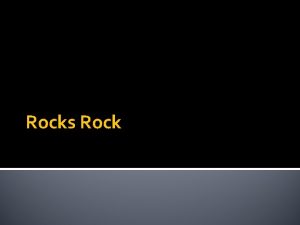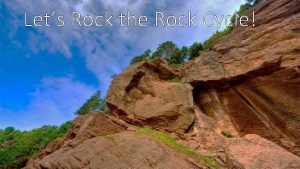Rocks What is a Rock A rock is





















- Slides: 21

Rocks

What is a Rock? �A rock is a naturally formed solid mixture containing mineral fragments, glass, and organic matter.

Igneous Rocks �Form from the cooling and hardening of lava or magma. • Lava: molten material on Earth’s surface. • Magma: molten material below Earth’s surface.

Cool Facts about Igneous Rocks �The word igneous comes from the Greek word for fire. �Igneous rocks are the oldest rocks on the Earth.

Intrusive Igneous Rocks �Form within the Earth’s surface from cooling & hardening magma. • Have larger grain sizes because the rock cooled slowly allowing the grains to form.

Examples of Intrusive Igneous Rocks �Granite �Monzonite �Gabbro

Extrusive Igneous Rocks �Form from the cooling and hardening of lava on the Earth’s surface. • Cool quickly, therefore they have very small or no grains.

Examples of Extrusive Igneous Rocks �Obsidian �Andesite �Basalt

Sedimentary Rocks �Form through the compaction or cementation of sediments.

Sediments �Fragments of rocks & minerals �Formed from rocks broken down by weathering.

Compaction �Occurs when sediments are buried and pressed together by the weight of the material above them. �Sedimentary rocks have layers or stripes

Cementation �Occurs when water carrying minerals that act like glue evaporates causing the sediments left behind to stick together.

3 Types of Sedimentary Rocks

1. Clastic Sedimentary Rocks �Made mostly of sediments. • The sediments can come in 4 different sizes: �Coarse �Medium �Fine �Very Fine

2. Chemical Sedimentary Rocks �Sedimentary rocks formed from water evaporating away leaving behind a cemented together rock.

3. Organic Sedimentary Rocks �Formed from the remains of living organisms being pressed together.

Examples of Sedimentary Rocks �Conglomerate �Sandstone �Shale

Metamorphic Rocks �Formed deep underground where other types of rocks encounter high heat and pressure to chemically change into new rocks.

Types of Metamorphic Rocks • Foliated – has a banded appearance. • Non-foliated – does not have a banded appearance.

The Rock Cycle � The rock cycle is a model that shows how rocks change from one form to another over time.

The Rock Cycle
 Compaction and cementation
Compaction and cementation Igneous metamorphic and sedimentary
Igneous metamorphic and sedimentary Extrusive rocks and intrusive rocks
Extrusive rocks and intrusive rocks Granite diorite gabbro
Granite diorite gabbro Concept map of minerals and rocks
Concept map of minerals and rocks Rock cycle of sedimentary rocks
Rock cycle of sedimentary rocks Sedimentary rock concept map
Sedimentary rock concept map Rock climb
Rock climb Chapter 3 standardized test practice answers
Chapter 3 standardized test practice answers A rock climber's shoe loosens a rock and her climbing buddy
A rock climber's shoe loosens a rock and her climbing buddy Rock cycle sedimentary
Rock cycle sedimentary The ingredients of rocks.
The ingredients of rocks. The rock
The rock Groups of sedimentary rocks
Groups of sedimentary rocks How are sedimentary rocks made
How are sedimentary rocks made Worded equation for photosynthesis
Worded equation for photosynthesis Subaerial processes
Subaerial processes Fossils in sedimentary rocks
Fossils in sedimentary rocks Luster streak
Luster streak Chapter 5 igneous rocks
Chapter 5 igneous rocks Metamorphic rocks
Metamorphic rocks Serpentine foliated or nonfoliated
Serpentine foliated or nonfoliated






